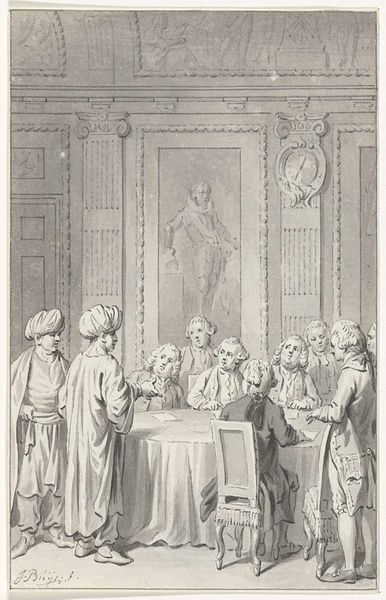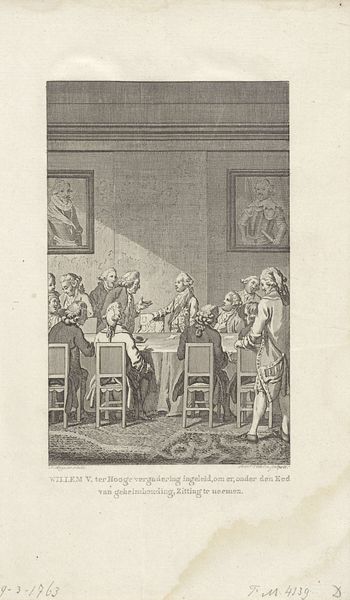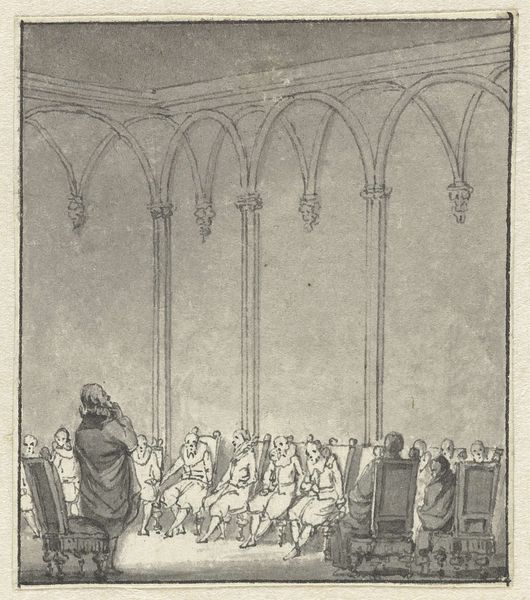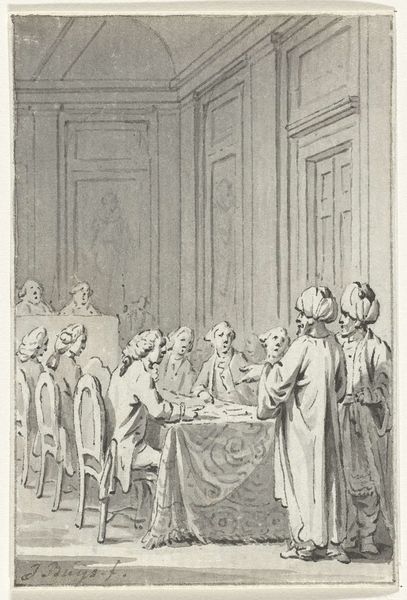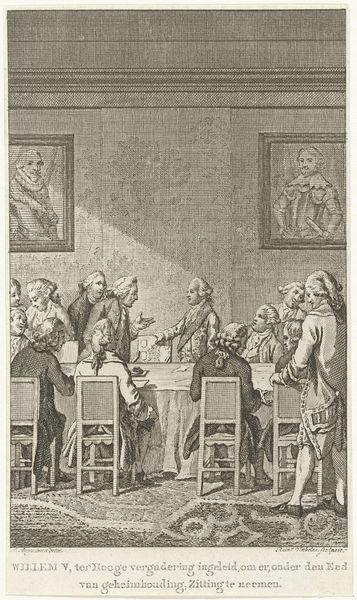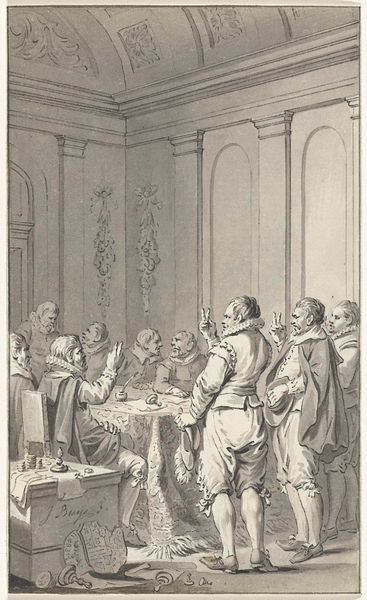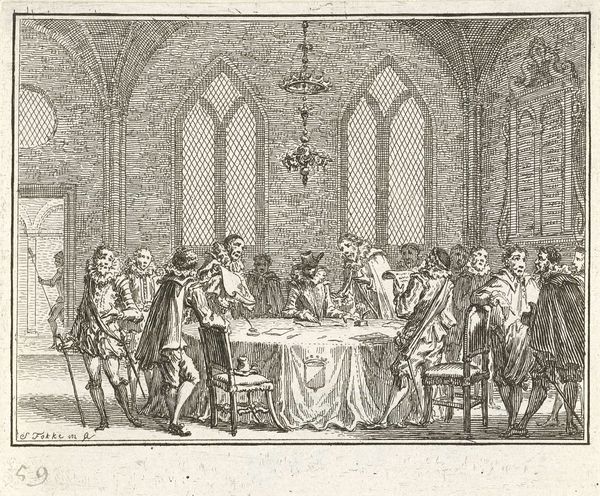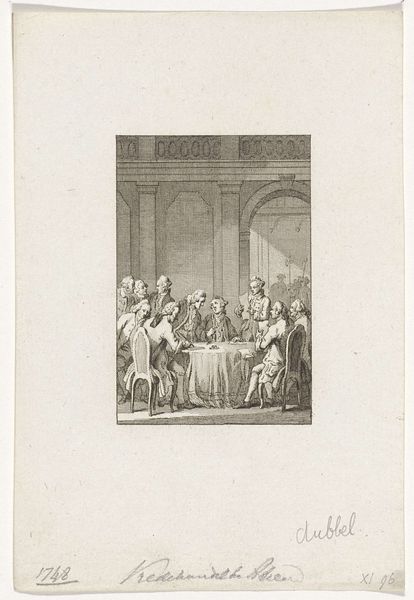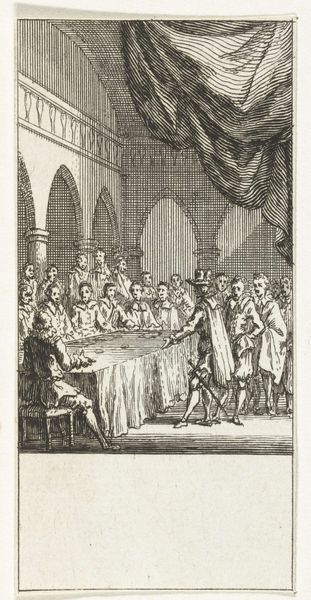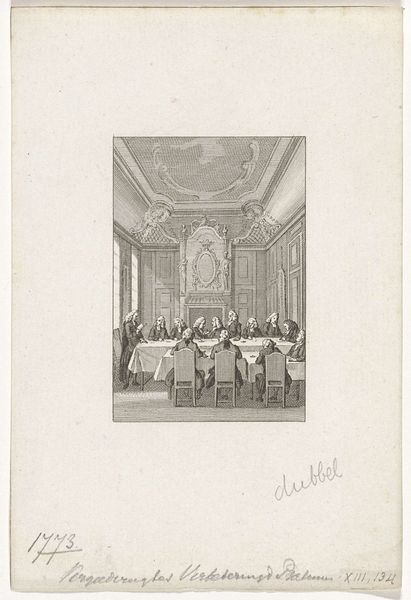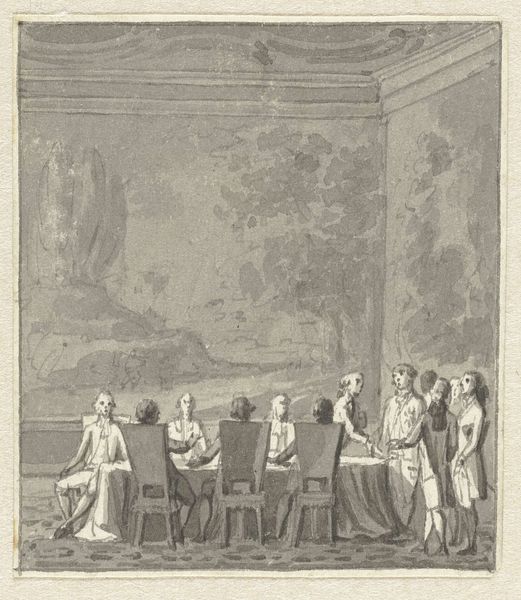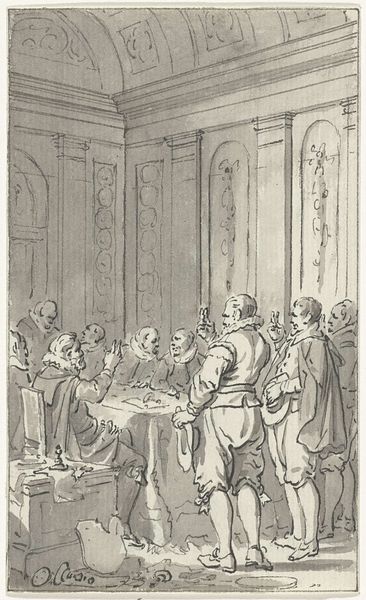
Openbare voorlezing van psalmen in de vergaderzaal van de Gemachtigden in het Mauritshuis, 1 oktober 1777 Possibly 1777 - 1801
0:00
0:00
Dimensions: height 82 mm, width 56 mm
Copyright: Rijks Museum: Open Domain
Curator: Initially, I see an exercise in monochrome restraint; shades of gray create form, light, and texture. What do you think? Editor: The composition evokes formality, yet also constraint. I want to dive into the social history depicted here. We are viewing Jacobus Buys' "Openbare voorlezing van psalmen in de vergaderzaal van de Gemachtigden in het Mauritshuis, 1 oktober 1777", or Public Reading of Psalms in the Assembly Hall of the Deputies at the Mauritshuis. It is in the collection of the Rijksmuseum. Curator: The use of ink and pen, visible in the artist's detailed lines and textures, grants it an appealing texture. This Baroque era drawing feels very rigid. Is it the subject, or the form making me feel this? Editor: It is the precise recording of this 1777 event in the Mauritshuis. Public reading of psalms had great significance within the Dutch Republic; especially at such a politically charged place. We must recall the Mauritshuis was then a public building used for governmental meetings. The act becomes almost revolutionary. Curator: The arrangement of the figures, rigidly seated around a long table, seems intentional. Notice the careful rendering of each face, capturing subtle expressions with minimalist technique. Editor: The formality of the gathering—the way these deputies present themselves and perform piety—underscores the socio-political implications embedded within the act of communal psalm reading. We might even question the function of Buys and the artwork itself: did he agree or disagree with these assemblies? Curator: Even the high, ornamented ceilings press down on the gathering; I can not help but imagine it impacts how people at the time approached and engaged with this architecture. Editor: Certainly. As Buys presents it, it shows an element of statecraft as part of the religious act. I’m particularly struck by the blend of genre and history painting here. It offers us an immediate glimpse into the complexities of late 18th-century Dutch society. Curator: It highlights not only the physical form, the geometry, and textures created by an ink pen on the page, but how material choices impact the representation itself. I walk away struck by the textures within such constraints. Editor: Precisely. We witness more than a scene; we’re offered a commentary on power, faith, and public life frozen by the artist’s perspective.
Comments
No comments
Be the first to comment and join the conversation on the ultimate creative platform.

